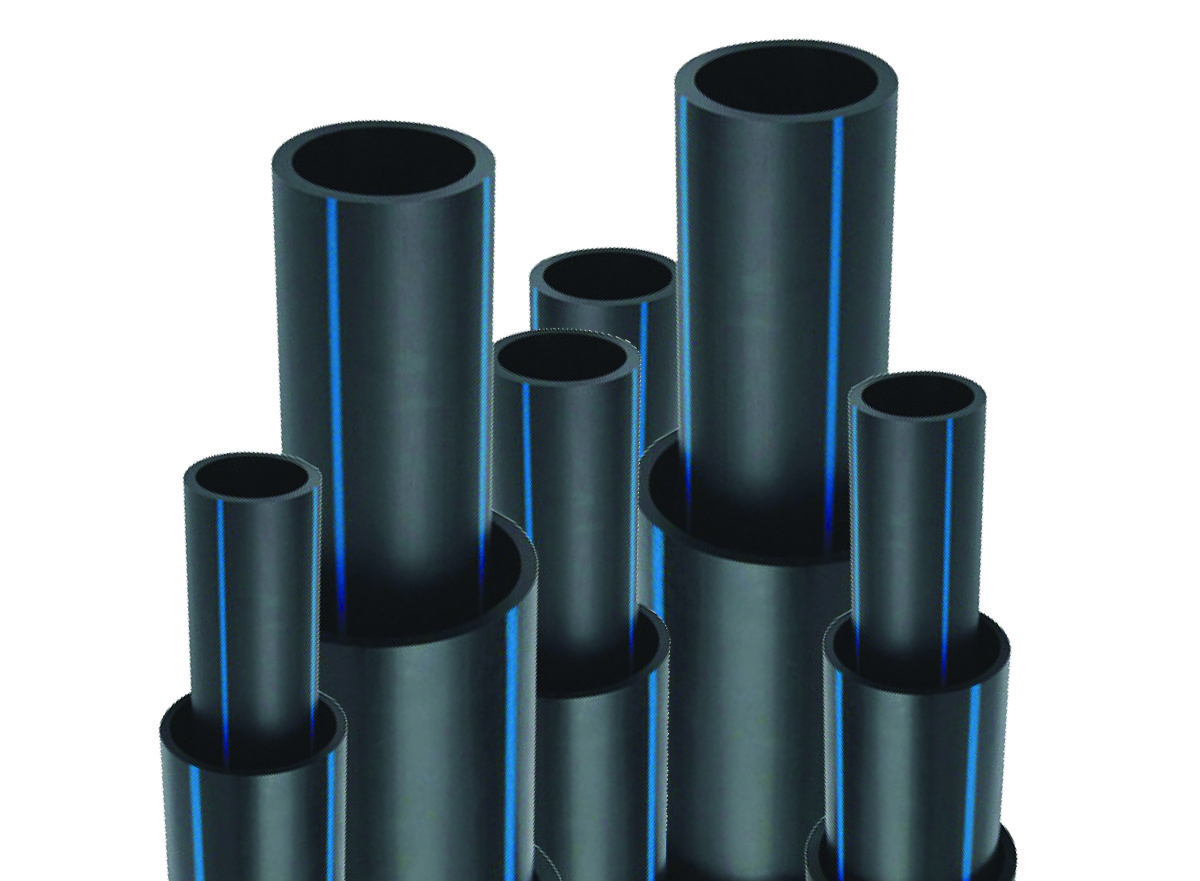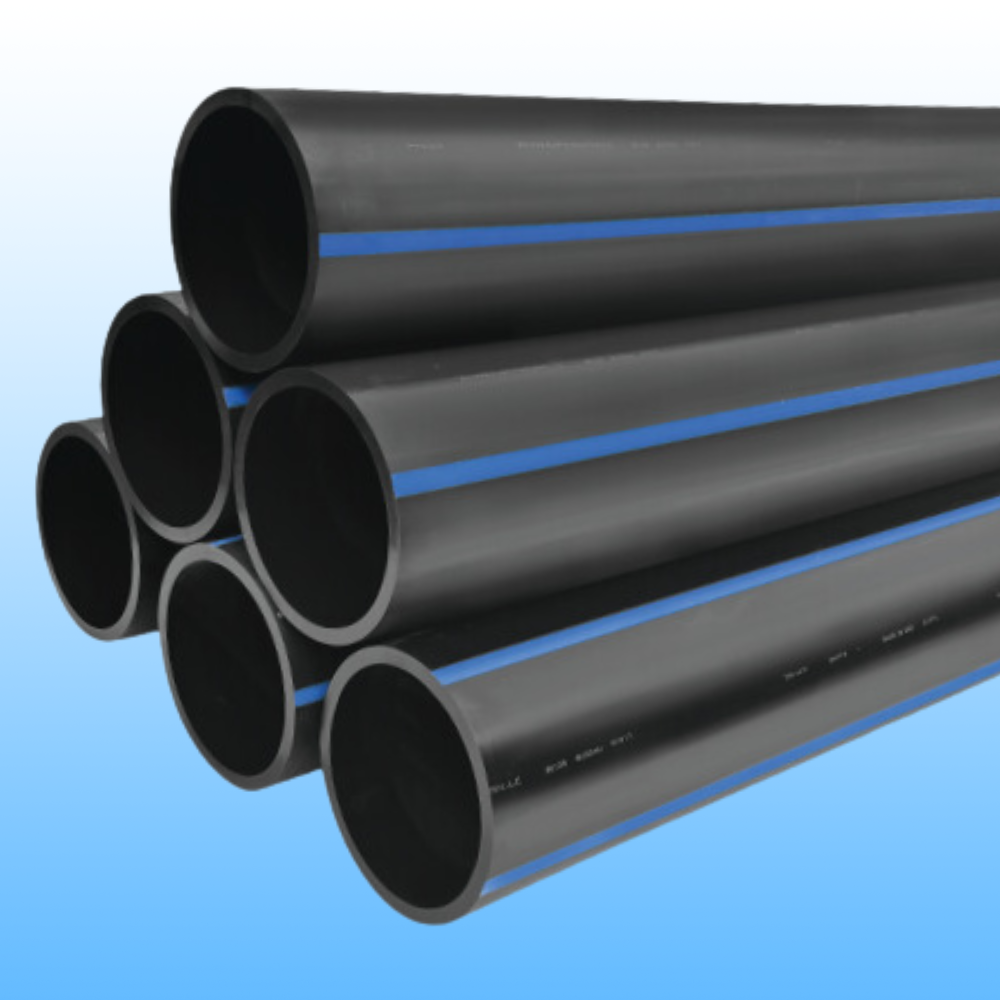Beginner’s Guide to Installing hdpe pipe fittings Midland TX for Efficient Performance
Check Out the Production Refine Behind High-Quality HDPE Pipeline and Its Applications
The production procedure of high-quality HDPE pipes is complex and methodical. It begins with the selection of raw products that improve efficiency. Following this, ethylene undertakes polymerization to create material, which is then formed through extrusion. Quality control is critical, making sure that the end product satisfies strict standards. Nevertheless, the trip of HDPE pipelines does not end with production. Their applications throughout different sectors expose a wider significance worth taking a look at.
Recognizing HDPE: Characteristics and Advantages

High-density polyethylene (HDPE) is a functional polycarbonate recognized for its durability and resistance to different environmental aspects. This material displays superb tensile toughness, making it suitable for demanding applications. Its low-density framework adds to a light-weight product, promoting simplicity of managing and installation. HDPE likewise showcases exceptional resistance to chemicals, which decreases deterioration when subjected to severe compounds.
The material's low dampness absorption further boosts its long life, making it perfect for use in pipes and storage space containers. Additionally, HDPE is resistant to ultraviolet (UV) radiation, making certain that products keep their integrity even when subjected to sunlight. In addition, its flexibility allows for the creation of elaborate forms without compromising toughness. The eco-friendly nature of HDPE, usually originated from recycled products, includes in its charm, advertising sustainable techniques in production. Generally, these residential properties and advantages make HDPE a favored option for various industrial and customer applications.
Raw Product Choice for HDPE Production
The selection of resources for HDPE manufacturing is essential to verify the last item fulfills the preferred specifications and top quality requirements. High-density polyethylene (HDPE) is mainly produced from polymerized ethylene, stemmed from fossil fuels such as all-natural gas or petroleum. The high quality of these feedstocks substantially affects the mechanical and thermal properties of the last HDPE.
Additives also play a significant function in boosting HDPE's efficiency, consisting of anti-oxidants, UV stabilizers, and colorants, which enhance toughness and resistance to ecological elements. The option process should take into consideration not just the chemical structure of the raw materials however likewise their handling features to assure reliable production.
In addition, the sourcing of raw materials should focus on sustainability and conformity with ecological laws, as responsible practices are necessary in today's market. Eventually, mindful resources selection lays the structure for creating top notch HDPE pipes suitable for varied applications.
The Extrusion Refine: Forming HDPE Pipe
The extrusion process plays an essential duty in forming HDPE pipelines, starting with careful product prep work strategies that guarantee suitable flow and consistency. Similarly essential is the layout of the die, which straight affects the last measurements and surface area top quality of the pipeline. With each other, these elements contribute substantially to the performance and top quality of HDPE pipe production.
Material Prep Work Strategies
Effective production of HDPE pipes starts with meticulous material preparation methods, especially the extrusion procedure. Throughout this phase, high-density polyethylene material is first dried to get rid of dampness, guaranteeing optimal flow features. The material is after that fed into the extruder, where it goes through heating and melting, transforming right into a viscous state. This heating procedure is very carefully regulated to keep the material's integrity and efficiency. The liquified HDPE is compelled via a die, shaping it into a continual pipeline form. Proper temperature level administration throughout extrusion is vital, as it directly impacts the material's residential properties and the final item top quality. As soon as formed, the HDPE pipeline is cooled and cut to defined sizes, all set for succeeding handling and applications.
Die Style Value
Precision in die style plays an important function in the extrusion procedure of HDPE pipelines. The die works as the final shaping device, straight influencing the pipeline's measurements, wall surface density, and surface coating. A well-designed die guarantees uniform product flow, lowering defects such as abnormalities and weak areas. The geometry of the die should be enhanced to fit the details buildings of HDPE, including its viscosity and thermal behavior throughout extrusion. Furthermore, the cooling price of the product as it passes via the die can significantly affect the pipe's structural stability. Subsequently, investing in advanced die technology is essential for makers intending to generate high-grade HDPE pipes that fulfill industry criteria and consumer expectations.
Quality Assurance Measures in HDPE Manufacturing
Although numerous aspects affect the high quality of HDPE pipe manufacturing, reliable quality assurance steps are critical to guarantee uniformity and dependability in the last product. Key quality assurance methods consist of extensive material evaluation, verifying that the raw polyethylene fulfills recognized criteria for purity and thickness. During the extrusion process, parameters such as temperature level, stress, and cooling time are carefully kept track of to preserve dimensional precision and structural honesty
In enhancement, post-production testing is necessary; manufacturers commonly perform hydrostatic tests to assess the pipeline's toughness and resistance to stress. Aesthetic assessments for surface area issues additionally boost high quality guarantee. Certification from pertinent standards companies, like ASTM or ISO, offers an additional layer of reputation. By implementing these extensive high quality control actions, manufacturers can minimize issues, enhance performance, and ensure that the HDPE pipelines satisfy the particular demands of numerous applications, inevitably resulting in customer fulfillment and trust fund in the product.
Applications of HDPE Pipe Throughout Industries
HDPE pipes are made use of throughout different markets because of their sturdiness and convenience. In water circulation systems, they assure reliable shipment, while in wastewater management, they offer trusted options for waste transportation. Additionally, farming irrigation networks gain from HDPE's resistance to corrosion and flexibility, making it an ideal choice for modern-day farming methods.

Water Distribution Equipments
A substantial number of markets rely on high-density polyethylene (HDPE) pipes for effective water circulation systems. Understood for their durability and resistance to deterioration, HDPE pipelines are widely used in municipal supply of water networks, farming irrigation, and commercial applications. Their light-weight nature facilitates simple handling and installation, reducing labor costs and time. In addition, HDPE pipelines can accommodate various pressure degrees, making them ideal for both low and high-pressure systems. American Plastics HDPE Pipe for Oilfield. The versatility of the product allows for seamless integration into existing framework, reducing the need for comprehensive excavation. In addition, HDPE's resistance to chemical seeping guarantees that the water provided continues to be risk-free and clean, making it a perfect choice for maintaining the high quality of safe and clean water throughout numerous fields
Wastewater Monitoring Solutions
Reliable water circulation systems likewise pave the means for innovative wastewater monitoring options, where high-density polyethylene (HDPE) pipes play a significant function. Popular for their sturdiness and resistance to rust, HDPE pipes are perfect for transporting wastewater in different settings. Their versatility permits simple setup in complex settings, decreasing the need for extensive excavation. Furthermore, HDPE's smooth indoor surface lowers friction, enhancing flow prices and efficiency. These pipelines are also immune to chemical leaching, making sure that impurities do not endanger the surrounding environment. Industries, municipalities, and treatment facilities progressively depend on HDPE pipelines for their reliability and durability, making them a favored choice for contemporary wastewater management systems. This versatility underscores the critical significance of HDPE pipelines across various applications.
Agricultural Irrigation Networks
Agricultural watering networks profit considerably from the usage of high-density polyethylene (HDPE) pipes, which offer reliable and reputable water shipment to plants. HDPE pipes are light-weight, making them simple to carry and mount, while their flexibility permits numerous configurations in diverse terrains. These pipelines show superb resistance to corrosion, chemicals, and UV radiation, making certain durability in rough agricultural atmospheres. Furthermore, their smooth indoor surface area decreases rubbing loss, optimizing water flow and reducing power costs associated with pumping. The long life of HDPE pipes, usually going beyond half a century, adds to reduce upkeep and replacement costs. Farmers increasingly depend on HDPE pipes to improve irrigation effectiveness and promote sustainable farming practices, inevitably leading to improved plant returns and source conservation.

Future Patterns in HDPE Pipeline Innovation
As the need for lasting and reliable infrastructure grows, developments in HDPE pipeline innovation are poised to transform different industries. Emerging fads consist of the assimilation of clever modern technologies, such as sensors and IoT capabilities, which assist in real-time surveillance of pipe conditions, reducing upkeep costs and stopping leaks. Furthermore, the development of sophisticated manufacturing methods, such as 3D printing, is enabling the manufacturing of facility, personalized pipe styles that provide to certain project requirements.
The emphasis on recycling and round economy practices is driving the advancement of HDPE pipelines made from recycled products, boosting sustainability. Improved jointing methods, such as electro-fusion and mechanical installations, are additionally enhancing installation effectiveness and dependability. Finally, the expanding emphasis on ecological policies is pushing makers to embrace greener production processes, guaranteeing that HDPE pipes not just fulfill industry requirements yet additionally cultivate an even more lasting future for facilities development.
Regularly Asked Questions
Exactly How Does HDPE Contrast to Other Plastic Materials?
HDPE exceeds lots of various other plastic materials pertaining to sturdiness, chemical resistance, and versatility. Its reduced thickness and high tensile strength make it ideal for numerous applications, typically exceeding options in both efficiency and long life.
What Are the Ecological Impacts of HDPE Manufacturing?
The environmental impacts of HDPE production include greenhouse gas exhausts, energy consumption, and prospective air pollution from manufacturing procedures. In addition, inappropriate disposal can bring about dirt and water contamination, check here increasing worries concerning lasting eco-friendly effects.
Can HDPE Piping Be Reused?
Yes, HDPE pipes can be recycled. Lots of centers accept used HDPE for processing, changing it into brand-new items. This reusing adds to sustainability efforts, decreasing plastic waste while conserving resources and energy in the manufacturing cycle.
What Is the Lifespan of HDPE Piping?

Exactly How Do Temperature Variants Affect HDPE Pipeline Efficiency?
Temperature variations greatly affect HDPE pipe efficiency, affecting versatility and stamina. Heats can result in softening, while reduced temperature levels may cause brittleness, eventually influencing the pipe's resilience and suitability for different applications in diverse settings.